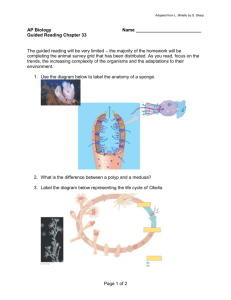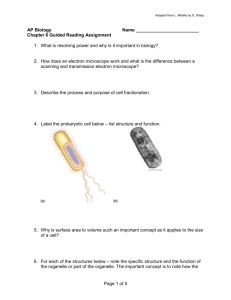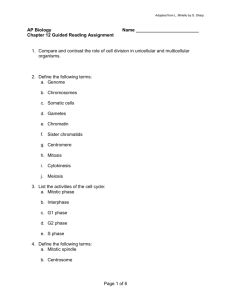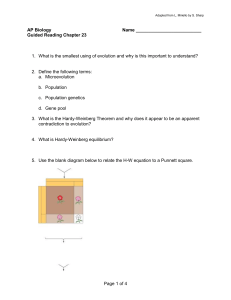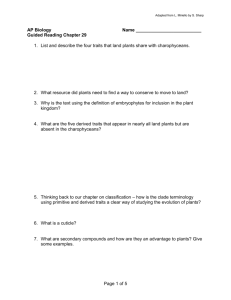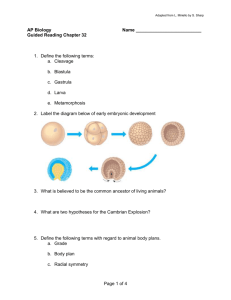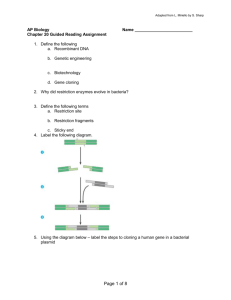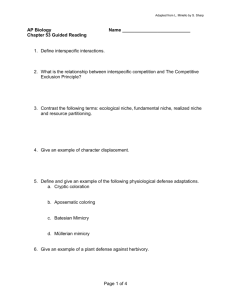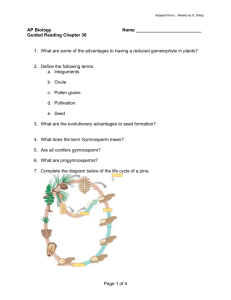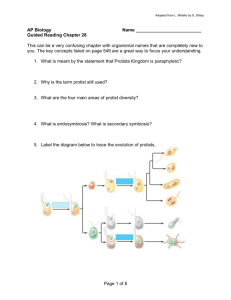Chapter 19 Guided Reading
advertisement
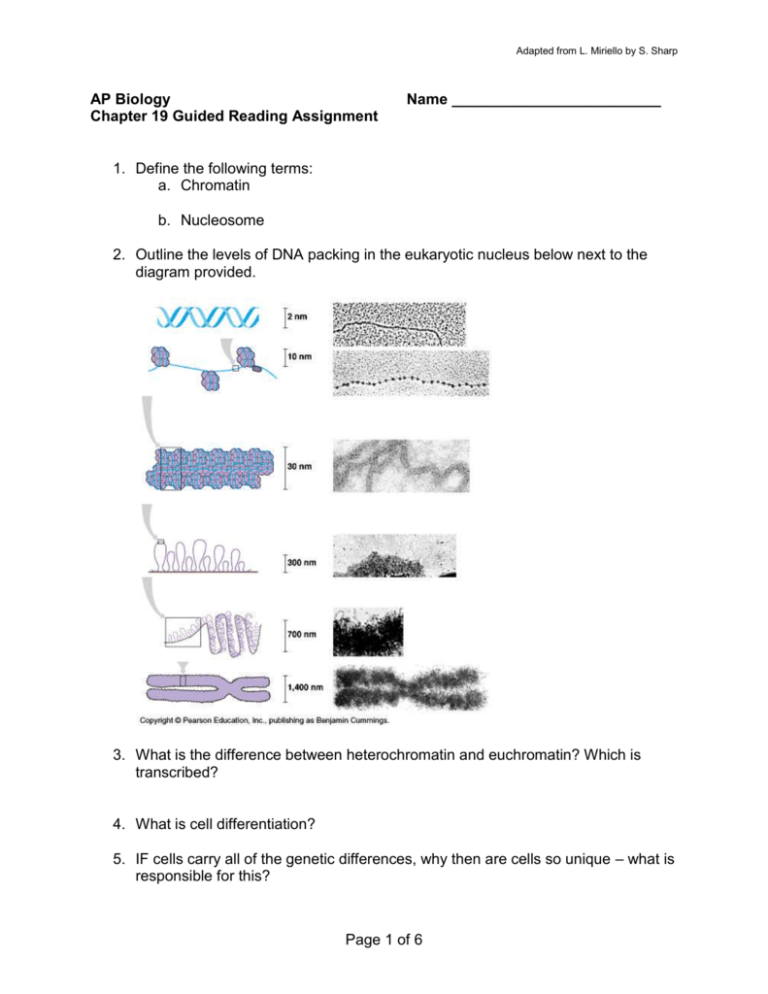
Adapted from L. Miriello by S. Sharp AP Biology Chapter 19 Guided Reading Assignment Name _________________________ 1. Define the following terms: a. Chromatin b. Nucleosome 2. Outline the levels of DNA packing in the eukaryotic nucleus below next to the diagram provided. 3. What is the difference between heterochromatin and euchromatin? Which is transcribed? 4. What is cell differentiation? 5. IF cells carry all of the genetic differences, why then are cells so unique – what is responsible for this? Page 1 of 6 Adapted from L. Miriello by S. Sharp 6. In the diagram below – highlight all of the potential locations for gene expression regulation in eukaryotic cells. How does this compare with prokaryotic cells? 7. What effect do the following have on gene expression? a. Histone acetylation b. Histone deacteylation c. DNA methylation 8. How does methylation relate to genomic imprinting? Page 2 of 6 Adapted from L. Miriello by S. Sharp 9. Define epigenetic inheritance. 10. How do the following control elements assist in regulation? a. Transcription factors b. Enhancers c. Activators d. Repressors 11. Use the diagram below to explain the interactions of enhancers and transcription activators. 12. Explain how RNA processing is a mechanism of post-transcriptional regulation. 13. What role do microRNA’s play in post-transcriptional regulation? Use the diagram below to help you explain. Page 3 of 6 Adapted from L. Miriello by S. Sharp 14. What is RNA interference? 15. How does translation provide another opportunity for control? 16. What is a proteasomes? 17. What is the difference between oncogenes,proto-oncogenes and tumorsuppressor genes? 18. What is the ras gene? 19. What is the p53 gene? 20. Label the diagram below that describes the signaling pathways that regulate cell division. Page 4 of 6 Adapted from L. Miriello by S. Sharp 21. Why is said that people inherit predispositions to cancer not cancer itself? 22. What are the types of DNA sequences in the human genome and what % of the genome are they? 23. What is the difference between transposons and retrotransposons. Use the diagram below to help you answer the question. Page 5 of 6 Adapted from L. Miriello by S. Sharp 24. What are Alu elements? 25. What are multi-gene families? 26. What are pseudogenes? 27. How can errors during meiosis lead to duplication of genes? 28. What are three ways transposable elements are thought to have contributes to the evolution of the genome? . Page 6 of 6
